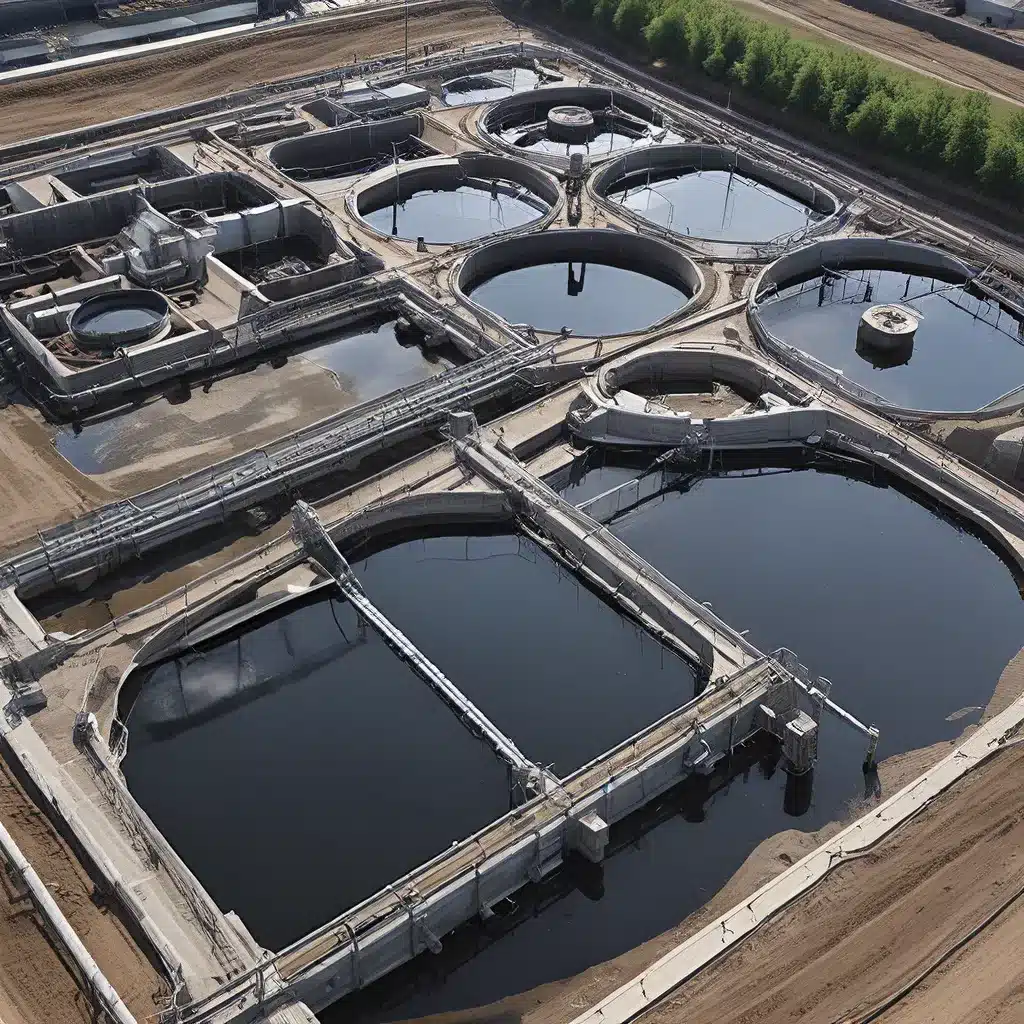
Unlocking the Power of AI for Wastewater Treatment
Have you ever wondered what goes on behind the scenes of the water treatment facilities that keep our communities clean and thriving? It’s a complex and often underappreciated process, but with the help of advanced technologies like artificial intelligence (AI), the future of wastewater management is looking brighter than ever.
As someone deeply passionate about environmental sustainability, I’ve been closely following the innovative ways that water treatment plants are leveraging AI to optimize their operations. And let me tell you, the results are nothing short of remarkable.
Transforming Wastewater Treatment with AI
Wastewater treatment plants (WWTPs) have long grappled with significant challenges, from managing operational efficiency to meeting strict effluent quality standards. But with the integration of AI-powered solutions, these obstacles are starting to crumble.
One such solution is the innovative technology developed by ProcessMiner, a company dedicated to enhancing efficiency and productivity for continuous manufacturers. By combining the power of AI with intelligent sensing meters, ProcessMiner’s turnkey solution automates the critical sludge dewatering process, which can account for up to 40% of a WWTP’s operating costs.
“The execution of an optimized polymer dosing strategy can lead to significant improvements,” the ProcessMiner team explains. “Today we know up to 40% of the cost of water treatment is associated with sludge dewatering. Therefore, the ability to dose the optimum amount of polymer supports the production of a drier sludge cake, reducing the cost of chemicals and increasing plant efficiency as centrifuges, screw presses, and belt presses operate efficiently and optimally.”
This transformative approach to wastewater treatment doesn’t just optimize polymer dosing – it frees up plant operators to focus on other critical activities while the system runs autonomously, adapting and learning as dynamic conditions in the plant evolve.
Harnessing the Power of Predictive Analytics
But the impact of AI in wastewater treatment goes far beyond sludge dewatering optimization. As the experts at FS Studio explain, AI-driven predictive analytics are revolutionizing the way WWTPs approach their operations.
By leveraging extensive datasets on water quality, usage patterns, and environmental factors, AI algorithms can foresee potential issues and enable real-time optimization of treatment processes. This proactive stance not only prevents pollution but also results in substantial cost savings, with studies indicating a remarkable return on investment (ROI) through reduced energy consumption and operational expenses.
“One pivotal aspect where AI showcases its potential is in predictive analytics,” the FS Studio team shares. “By doing so, AI algorithms can foresee potential issues enabling real-time optimization of treatment processes. This proactive stance not only prevents pollution but also results in substantial cost savings with studies indicating a remarkable return on investment (ROI) through reduced energy consumption and operational expenses.”
Enhancing Nutrient Removal with AI
But the benefits of AI-powered wastewater treatment don’t stop there. According to a study published in the journal Science of the Total Environment, the integration of AI in WWTPs can lead to noteworthy advancements in nutrient removal as well.
“Optimizations facilitated by machine learning algorithms have demonstrated the capability to enhance nutrient removal by 30-40%,” the researchers report. “This not only ensures a higher quality of treated water but also translates into significant energy savings further mitigating the need for costly plant upgrades.”
In other words, AI-driven control systems can continually fine-tune parameters like chemical dosages and flow rates, achieving a dual impact of environmental sustainability and financial prudence. It’s a win-win for both the planet and the plant’s bottom line.
The Thriving Market for AI-Powered Solutions
With so many compelling benefits, it’s no surprise that the market for AI solutions in wastewater treatment is thriving. According to FS Studio, nearly 20 companies are now offering commercial AI offerings, ranging from innovative startups to established industry players.
“The focus of AI solutions is shifting from providing insights for individual assets to encompassing entire treatment plants,” the FS Studio team notes. “These solutions are becoming increasingly predictive and prescriptive, allowing for forecasting future outcomes and offering precise control strategies.”
And the future looks even brighter, as AI-powered wastewater treatment continues to evolve and mature. With the ability to optimize everything from energy efficiency to resource utilization, these cutting-edge technologies are poised to transform the way we manage our critical water infrastructure.
Embracing the Future of Wastewater Treatment
As I reflect on the incredible potential of AI in wastewater treatment, I can’t help but feel a sense of excitement and optimism. By leveraging these transformative technologies, we have the power to create more efficient, cost-effective, and sustainable water treatment processes – all while ensuring compliance with environmental regulations.
It’s a future that’s not just good for the planet, but also for the bottom line of water treatment facilities. And with Inland Waters Inc. leading the charge in innovative water treatment solutions, I can’t wait to see what the future holds.
So, if you’re like me and are passionate about environmental stewardship, keep an eye on the advancements in AI-powered wastewater treatment. It’s a revolution that’s just getting started, and the possibilities are truly endless.


